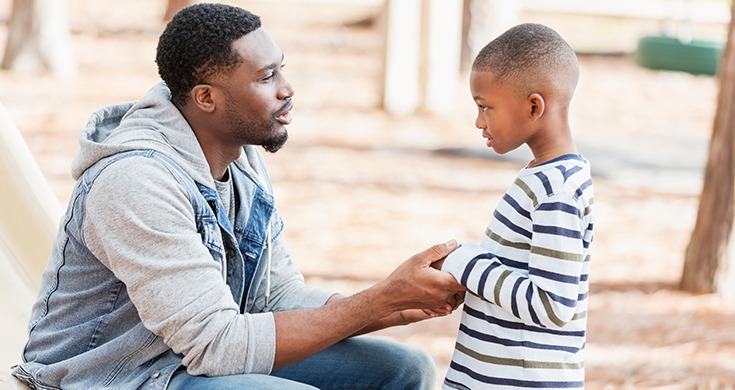Any time a child goes missing, parents across the country and around the globe are affected. Moms and dads hold their own little ones a bit tighter, imagining the devastation felt by members of the missing child’s family.
National Missing Children’s Day on May 25 is a difficult one for all parents—even those whose lives have not been directly touched by this sort of loss. It is a reminder that tragedy doesn’t discriminate. There are families from all walks of life still searching for their loved ones.
In 2018, 424,066 children were reported missing. That’s an alarming figure. The good news is that 99.8 percent of missing children are reunited with their families. Only a tiny fraction of these kids are abducted by strangers. In fact, one reason such stories of missing children are covered so heavily in the media is because such incidents are exceedingly rare.
No matter how rare the risk, however, parents should be diligent to keep their children safe. There are concrete steps you can take to protect your children. The first step is understanding the most common reasons children go missing.
What to Know about Missing Children
On October 1, 1993, 12-year-old Polly Klaas was kidnapped from her home by a stranger. Nine weeks later, her remains were found. During those weeks, there was a global search and rescue effort. It was the first time the internet was used in a missing child case, and an amazing two billion images of Polly were distributed worldwide. Though Polly did not come home, her family has worked tirelessly to help others facing the overwhelming and terrifying task of finding a missing child.
According to statistics published by the Polly Klaas Foundation, almost 90 percent of children who are reported missing have not been victims of a crime. Their whereabouts are temporarily unknown, perhaps because there was a misunderstanding or miscommunication, they are lost, or they have run away.
An additional nine percent of missing children have been taken by a family member during an acrimonious custody dispute. Just three percent are kidnapped, and in most of these cases, it is by someone the child knows. These stats are important for families to know, because they might change your focus when it comes to keeping your children safe.
Eight Safety Tips for Parents and Kids
Teaching children about safety is a bit tricky. Parents often struggle with finding balance between sharing important safety information and frightening children. These tips from experts in the field may help:
- Make sure children know their full names, your full name, their telephone number, and their address.
- Explain how 911 works and practice making calls through role play.
- Teach children to “yell no, then go” if an adult they don’t know approaches them and tries to get them to go with him or her.
- Discuss common tactics that strangers use to lure children in, for example looking for a lost pet or some other sort of assistance, or pretending to be a person in authority by displaying a badge. Kids should be alert to these tricks.
- Remind older children to stay in groups when they are not being supervised by a parent.
- Monitor phone bills for unfamiliar numbers.
- Monitor online activity by keeping computers in a central part of your home, rather than your child’s bedroom. Keep track of the apps your kids are using.
- Make sure all of your children’s caretakers know who does—and does not—have permission to pick up your child from school or other location.
Many organizations offer free child safety kits, and there are a variety of resources to assist you with talking to kids about these difficult topics.
What to Do If Your Child Is Missing
National Center for Missing and Exploited Children suggests parents begin by searching thoroughly, especially in places where kids may hide, such as inside vehicles or under beds. If a child is missing from a store, notify the store manage and security office immediately. When calling the police, request that they enter your child’s information into the FBI’s National Crime Information Center Missing Person File right away.
Usually, children are found safe within a few hours. However, in the rare situation where your child is not found quickly, organizations like the National Center for Missing and Exploited Children and the Polly Klaas Foundation provide guidance, support, and volunteers to assist with the search.
What to Know about Child Trafficking
While the problem of human trafficking is a separate issue from missing children, the two can intersect. And many parents may not realize that human trafficking happens in the U.S. as well as in other countries. “The United States is a source and transit country,” according to Unicef, “and is also considered one of the top destination points for victims of child trafficking and exploitation.” Traffickers look for the most vulnerable, often because of their immigration status or lack of English proficiency, but also due to poverty, neglect, and other behaviors, according to the Department of Homeland Security. If you suspect a child or adult is a victim of trafficking, contact the National Human Trafficking Resource Center at their hotline number: 1-888-373-7888.
Missing Children’s Day is an opportunity to review your family’s safety plan and discuss safety rules with children. It can also be a good time to take action in honor of those who are still missing. As a family, you can post and share flyers. Alternatively, you can make contributions to the organizations doing critical work in preventing child trafficking, protecting children from becoming crime victims, and bringing missing children home.




































